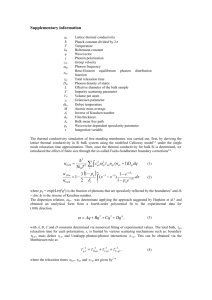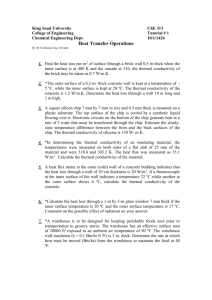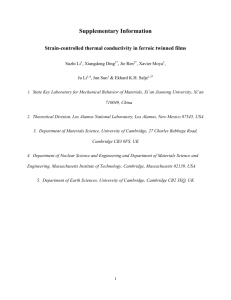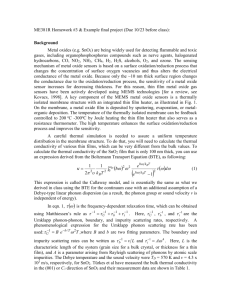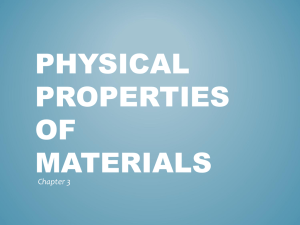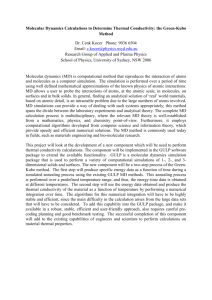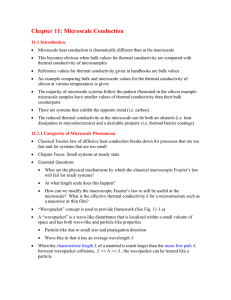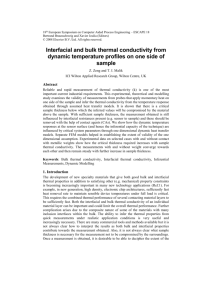ME381R Homework #1:
advertisement
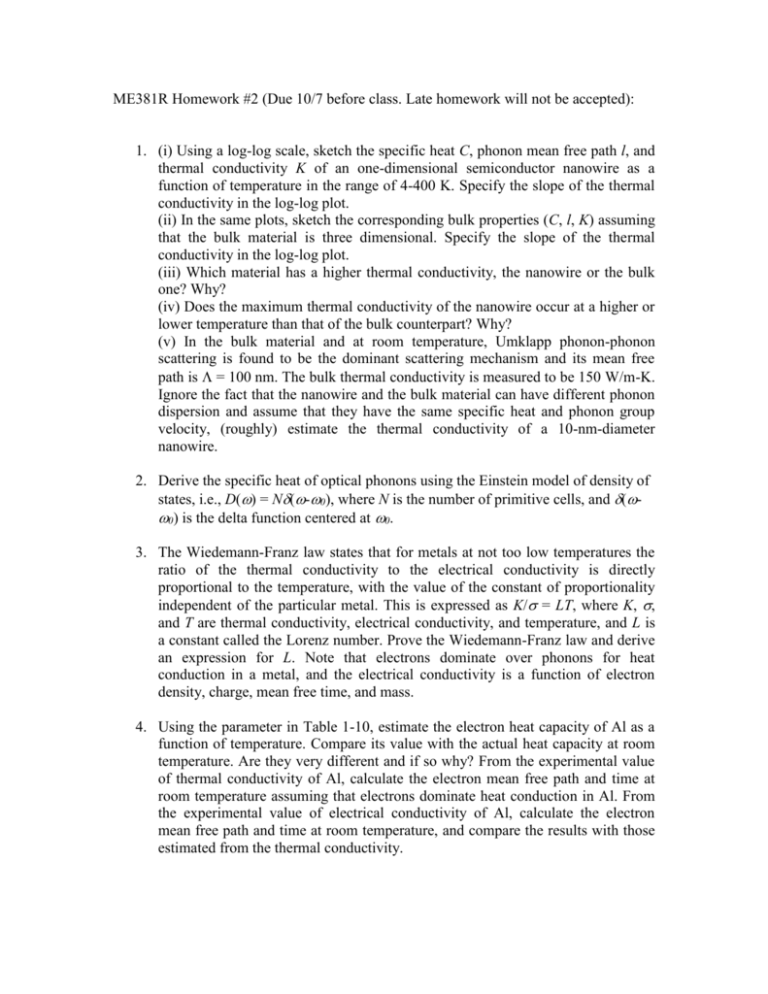
ME381R Homework #2 (Due 10/7 before class. Late homework will not be accepted): 1. (i) Using a log-log scale, sketch the specific heat C, phonon mean free path l, and thermal conductivity K of an one-dimensional semiconductor nanowire as a function of temperature in the range of 4-400 K. Specify the slope of the thermal conductivity in the log-log plot. (ii) In the same plots, sketch the corresponding bulk properties (C, l, K) assuming that the bulk material is three dimensional. Specify the slope of the thermal conductivity in the log-log plot. (iii) Which material has a higher thermal conductivity, the nanowire or the bulk one? Why? (iv) Does the maximum thermal conductivity of the nanowire occur at a higher or lower temperature than that of the bulk counterpart? Why? (v) In the bulk material and at room temperature, Umklapp phonon-phonon scattering is found to be the dominant scattering mechanism and its mean free path is = 100 nm. The bulk thermal conductivity is measured to be 150 W/m-K. Ignore the fact that the nanowire and the bulk material can have different phonon dispersion and assume that they have the same specific heat and phonon group velocity, (roughly) estimate the thermal conductivity of a 10-nm-diameter nanowire. 2. Derive the specific heat of optical phonons using the Einstein model of density of states, i.e., D() = N(-0), where N is the number of primitive cells, and (0) is the delta function centered at 0. 3. The Wiedemann-Franz law states that for metals at not too low temperatures the ratio of the thermal conductivity to the electrical conductivity is directly proportional to the temperature, with the value of the constant of proportionality independent of the particular metal. This is expressed as K/ = LT, where K, , and T are thermal conductivity, electrical conductivity, and temperature, and L is a constant called the Lorenz number. Prove the Wiedemann-Franz law and derive an expression for L. Note that electrons dominate over phonons for heat conduction in a metal, and the electrical conductivity is a function of electron density, charge, mean free time, and mass. 4. Using the parameter in Table 1-10, estimate the electron heat capacity of Al as a function of temperature. Compare its value with the actual heat capacity at room temperature. Are they very different and if so why? From the experimental value of thermal conductivity of Al, calculate the electron mean free path and time at room temperature assuming that electrons dominate heat conduction in Al. From the experimental value of electrical conductivity of Al, calculate the electron mean free path and time at room temperature, and compare the results with those estimated from the thermal conductivity.


